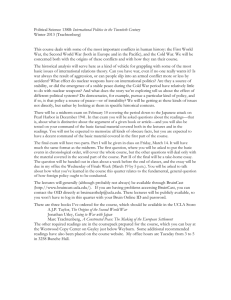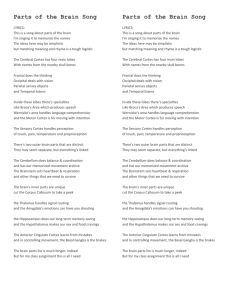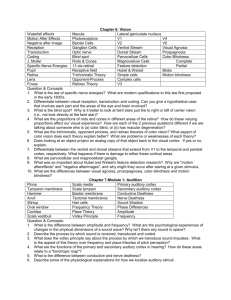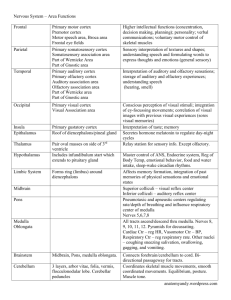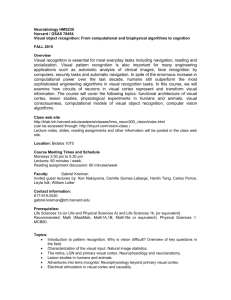UNIVERSITY OF OSLO Faculty of Mathematics and Natural Sciences
advertisement
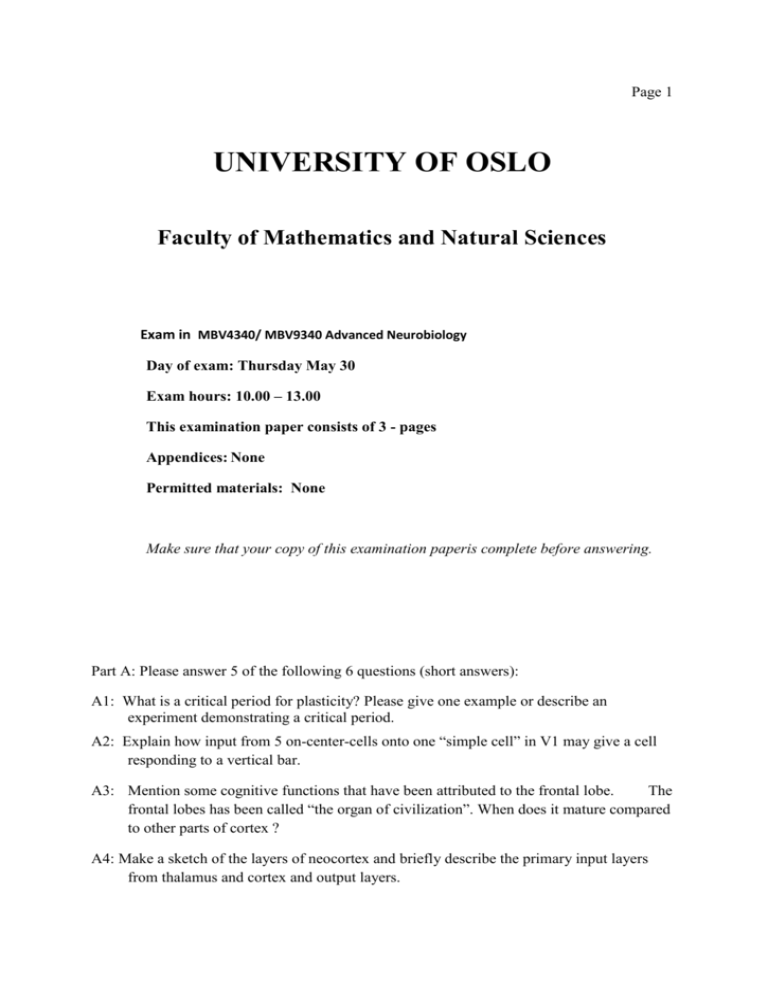
Page 1 UNIVERSITY OF OSLO Faculty of Mathematics and Natural Sciences Exam in MBV4340/ MBV9340 Advanced Neurobiology Day of exam: Thursday May 30 Exam hours: 10.00 – 13.00 This examination paper consists of 3 - pages Appendices: None Permitted materials: None Make sure that your copy of this examination paperis complete before answering. Part A: Please answer 5 of the following 6 questions (short answers): A1: What is a critical period for plasticity? Please give one example or describe an experiment demonstrating a critical period. A2: Explain how input from 5 on-center-cells onto one “simple cell” in V1 may give a cell responding to a vertical bar. A3: Mention some cognitive functions that have been attributed to the frontal lobe. The frontal lobes has been called “the organ of civilization”. When does it mature compared to other parts of cortex ? A4: Make a sketch of the layers of neocortex and briefly describe the primary input layers from thalamus and cortex and output layers. A5: Why can it be harmful to give newborn babies oxygen rather than air ? What is the “oxygen paradox” ? A6: Sketch and explain what an EEG recording may look like before and during an epileptic seizure. Explain the term “synchrony” and give a brief explanation to the big amplitude observed during seizures. Part B: Please answer all questions below (more comprehensive answers compared to part A): B1: You are conducting a patch-clamp experiment with frog oocytes that express voltagegated Na+ channels. You start out in cell-attached mode and record current through a single voltage-gated Na+ channel. You have a separate stimulation electrode inside the cell and use that to make a long-lasting depolarising square pulse. (a) Draw 4-5 lines of the current you measure, and make a summation of the currents. (b) Next, you make a hole in the cell membrane and record the macroscopic current in the whole-cell mode. Explain the similarity between the current response seen here and the summed current in (a). B2: Already in 1949, Donald Hebb postulated a theorem that can be stated like: “cells that fire together, wire together”. Has the hypothesis been falsified or verified by modern neuroscience? Explain how the NMDA receptor has a key role in LTP and learning as a coincidence-detector. B3: Imagine a rat running back and forth on a “linear track”. Draw the activity of three grid cells with different spacing in a graph with position on the x-axis and firing rate on the yaxis. In one location on the x-axis are the three neurons active at the same time. Imagine that these three cells are connected to the very same place cell in hippocampus and draw a sketch of the circuit. Where do you think the place cell would have its place-field? Explain how the place field may arise from just summation of the input of the grid cells. B4: Trachtenberg et al (2002) introduced a method demonstrating that fluorescent labeled neurons and their dendritic spines can be seen and monitored in the living brain. In order to study the relation between activity-dependent plasticity and structural changes, they induced a dramatic change in sensory input to the somatosensory cortex by trimming some vibrissa. On what level did they see the changes (growth or retraction of axons, dendrites, or spineae) ? Explain the figures below. The brain have to be stable in order to keep your memories and skills, but also be and plastic so you may learn new things. How does this correspond to the observations of ”spine dynamics” by Trachtenberg et al (2002) or others ? Figure 6. (Trachtenberg et al., 2002) a) Experimental protocol.............. d) Spine density for cells lying within (solid squares) or outside (open squares) the barrel cortex. e) Turnover ratio (the fraction of spines that turn over between successive imaging sessions) as a function of time. Chessboard deprivation occurred immediately after imaging day 4.





